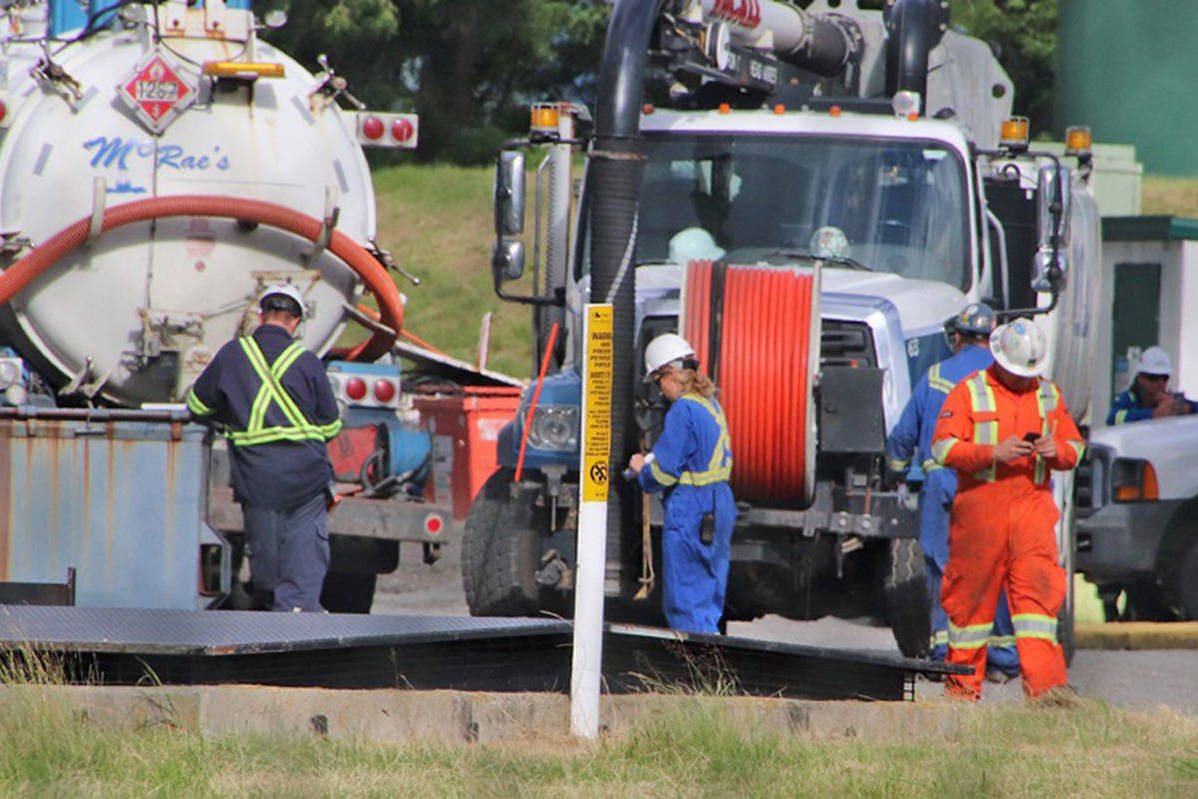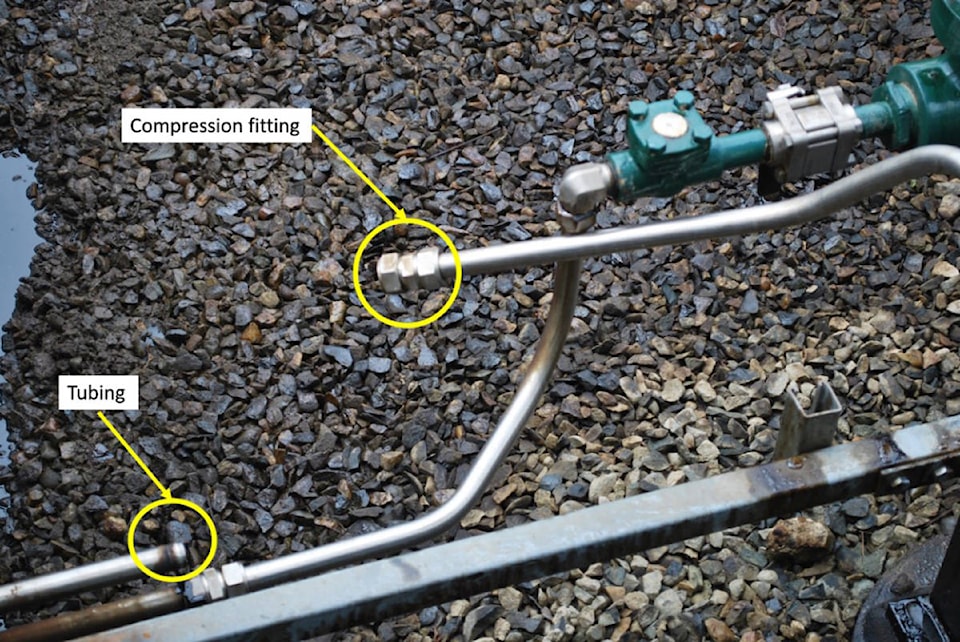A one-inch pipeline fitting has been identified as the source of a crude-oil spill last June at Trans Mountain Pipeline’s Sumas pump station in Abbotsford.
The Transportation Safety Board (TSB) of Canada on Tuesday (April 13) released the findings of its final report into the matter.
The report states that the spill – amounting to 150,000 to 190,000 litres – resulted when a one-inch compression fitting separated from tubing on a section of above-ground piping adjacent to the building that houses the “equation of state” (EOS) system.
“The failed compression fitting was used to join tubing from the discharged mainline to the EOS system,” the report states.
“From the point of release, the oil had followed a path into the pump station’s surface drainage system, through an oil-water separator, and into a culvert that discharges surface water into the south section of the property.”
As a result, 7,000 litres of the oil migrated to the agricultural field in the south section, the TSB said.
RELATED: B.C. Indigenous leaders speak out after 150,000 litres of oil spill in Abbotsford
RELATED: Inclusion of Indigenous reps after a spill part of ‘reconciliation’: Suzuki Foundation
The agency said that during the site cleanup, approximately 143,000 litres of the product was recovered, including about 6,600 litres from the south section.
The TSB said the compression fitting was installed in 2015, using the manufacturer’s instructions.
The fitting was tested in December 2015 and was found to have no leaks, the report indicates.
On the day of the spill – June 12, 2020 – alarms were triggered to indicate that a spill had occurred, and an automatic-shutdown process began, the report states.
However, the valves required to isolate the section of tubing in question were manual and were not part of this process. They remained open until Trans Mountain personnel were able to safely enter the site about five hours after the alarm sounded, the report indicates.
Meanwhile, the oil releasing from the EOS system reached the oil-water separator and continued to accumulate until it could not longer be trapped effectively, the TSB said.
The separator does not have an automated isolation system or manual valves.
“Therefore, once oil began flowing into the agricultural field, there was no means to stop it until operators could isolate the source of the release on the EOS system.”
The report states that once the source of the leak was established, Trans Mountain placed vacuum trucks at the oil-water separator and along the fence line separating the north and south sections of the property.
Site remediation started the following day, and included excavating the affected soils and recovering the free product from the groundwater, the report adds.
The TSB said a “multi-year remediation plan” was developed for contaminants that could not be removed from the site.
“The most appropriate remediation methods will be selected and implemented based on the results of continued monitoring and testing of the soil and groundwater.”
The TSB said the Canada Energy Regulator conducted emergency management of the site, did field inspections, and has monitored the progress of remediation activities.
The report says the actions taken by Trans Mountain have included developing a procedure to verify the integrity of the existing tubing systems and adding an automated isolation valve on the inlet of the EOS tubing system and a check valve on the inlet.
The company has also agreed to complete upgrades to the Sumas pump station by this summer, including containment and drainage features, a new oil-water separator, and a line containment area around the above-ground piping.
The report says Trans Mountain will also develop an internal standard for the construction and quality assurance of new tubing systems, as well as a procedure for their installation.
The Trans Mountain Pipeline transports petroleum crude oil and refined petroleum products from Edmonton to refineries and terminals in B.C. and Washington state.
Previous spills at the Abbotsford site took place in 2005, involving 210,000 litres, and in 2012, involving 90,000 litres.
RELATED: Delayed response impacted oil spill, says report
vhopes@abbynews.com
Like us on Facebook and follow us on Twitter

